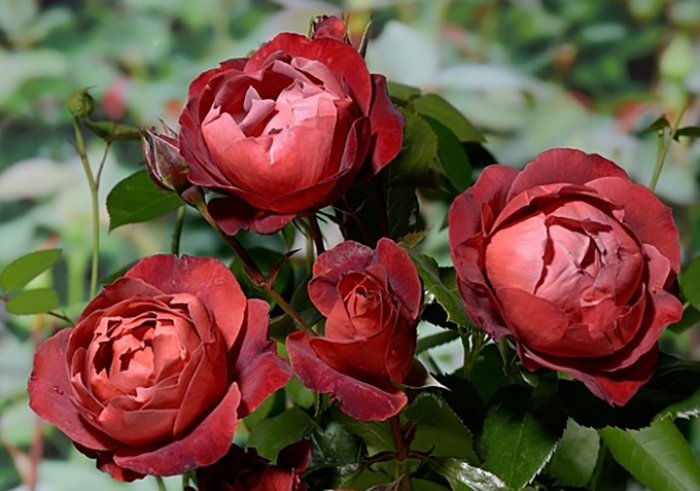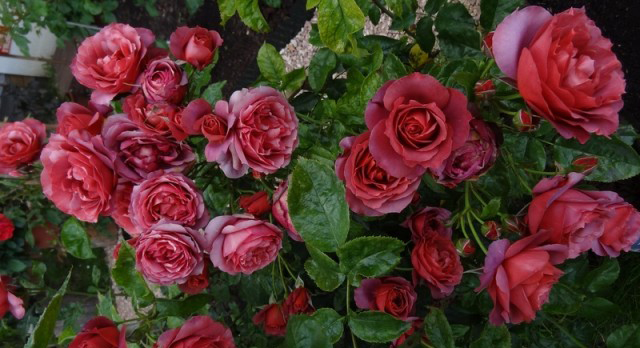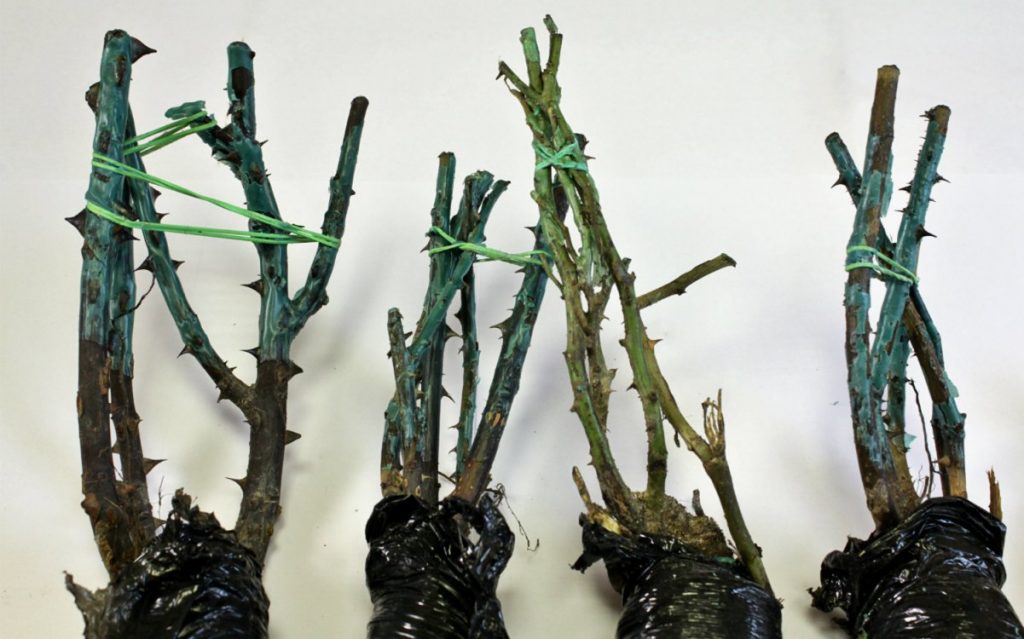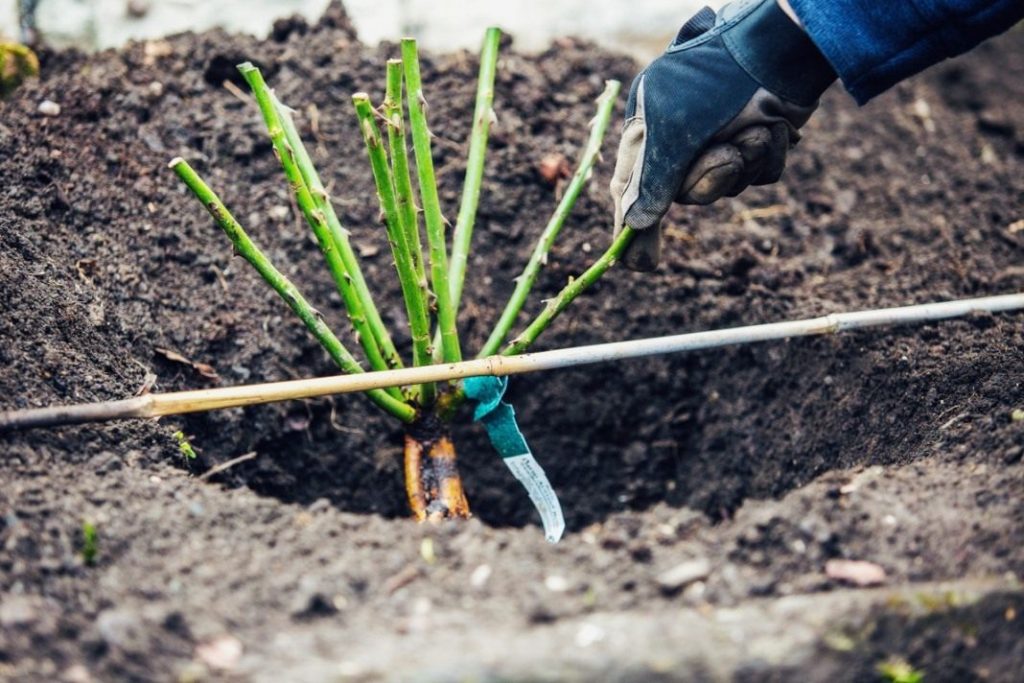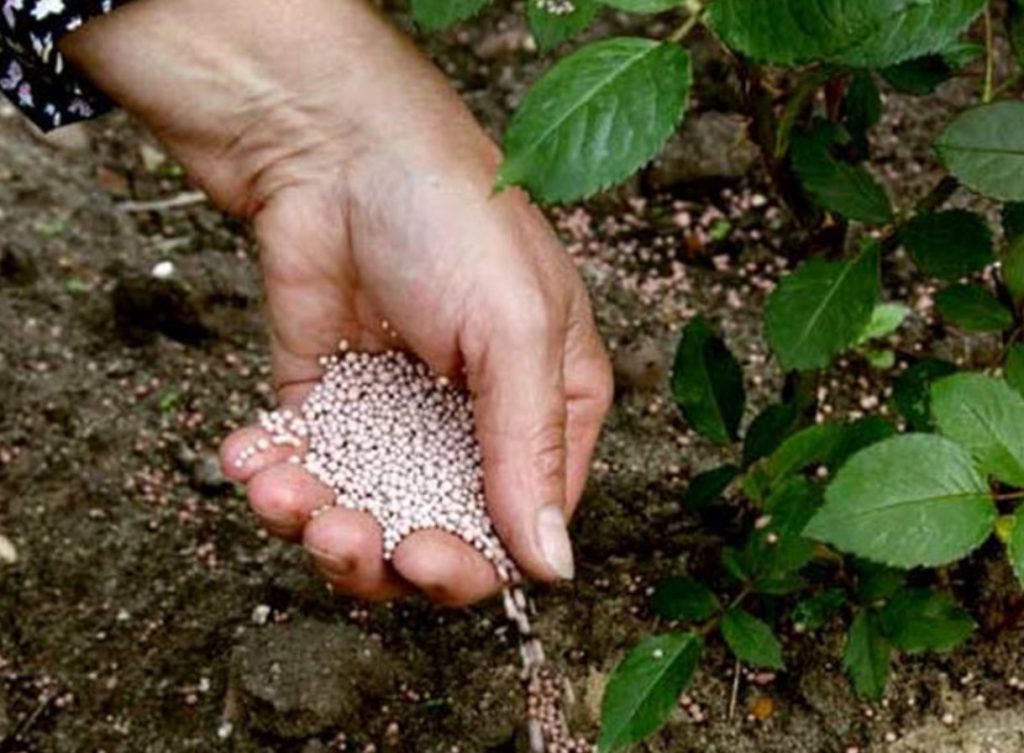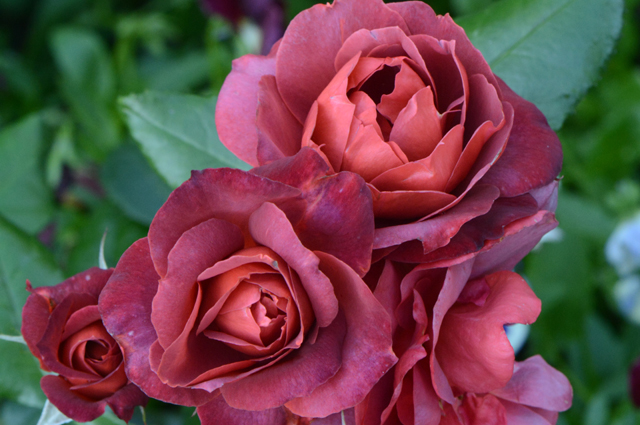Content:
Rose is an ancient representative of the Rosehip genus, describing a large number of varieties and species obtained not only naturally, but also artificially (breeding).
History
Hot chocolate rose was bred by Nola Simpson in 1986 in New Zealand by crossing tea-colored roses with nutmeg and polyanthus.
Characteristic
Sheet
The deciduous mass is dark green with a glossy outer side and is large.
Trunk
The stem system is strong, up to 1-2 m in height, up to 800 mm in width. One peduncle can have up to 5 flowers.
Flower
Rose Hot chocolate belongs to the Floribunda group. The bud contains up to 30 petals, which together form a flower up to 9 cm in diameter. The inflorescence can be in the form of a glass or a cup. The petals can be straight, part-double and full-double.
Color
The color range includes shades of brown from red to terracotta.
The color change depends on weather conditions: in cold weather it is closer to red color, in warm weather it is closer to terracotta. In addition to the existing color change, there is a development factor: at the beginning of growth in the color of the plant, brown and red are in equal parts, however, in the process of development, the brown color begins to prevail. Besides brown, flowers can also be colored orange, rose red, pink with white edging.
Bloom
Rose Hot chocolate blooms from the first days of June to the last ten days of October without stopping: some flowers dry up, others come in full force.
Agrotechnics
Preparation of planting material
For the plant to take root faster, you must:
- cut the roots and shoots, leaving 30-35 cm on both parts of the plant;
- one day before transportation to open ground, put the seedling in a mixture of a growth accelerator and water.
Site preparation
Before planting a flower from the Pink family, you must:
- choose a well-ventilated area on the sunny side of the garden or summer cottage: it is worth focusing on the elevation;
- check that the soil is neutral or slightly acidic: in case of strong acidity of the soil, add lime to it and mix thoroughly;
- moisten, but do not make a swamp: the rose does not like either excess or lack of moisture.
Despite the good resistance to drought, in case of insufficient water supply to the roots, the green mass falls off, flowering does not occur at full strength.
Disembarkation
In order for the plant to quickly and abundantly begin to bloom, you must:
- dig a hole about 45-50 cm wide and 30 cm deep;
- put on the bottom of the hole drainage in the form of gravel, sand, rubble, in order to protect the "pet" from groundwater, the layer should be about 10 cm;
- pour water and wait until it "leaves";
- apply fertilizer with a predominance of phosphorus, for example, "Kornevin", in the ratio of 1 g of powder to 1 liter of water;
- plant a seedling in a new "house", positioning it so that another plant can be grafted onto it;
- sprinkle the root system with earth and slightly compact the soil;
- water thoroughly and wait until moisture is completely absorbed;
- with the end of the hole, raise the earth to the trunk, forming a mound;
- put a mixture of peat, humus and wood ash around the plant.
In the case of using the plant as a flower bed decoration, it is necessary to plant the bushes tightly to create a visual colored carpet.
Feeding
For the fertilization to be useful, it is advisable to follow these recommendations:
- dig trenches;
- pour water there and wait for it to be completely absorbed;
- put fertilizer;
- cover with earth;
- water again.
Reproduction
To increase the number of bushes you need:
- select a healthy, strong, adult bush;
- separate the shoot from the top of the branch 10-15 cm with a secateurs;
- remove excess leaves: by cutting off the lower leaf and partially composing the rest of the green cover;
- put in a container with water for 30 days, it is advisable to store the container in a room where the temperature is kept up to 30 ° C;
- wait for the roots and transplant into a pot.
Or:
- plant the cutting in a pre-prepared garden bed or pot;
- water the soil;
- create greenhouse conditions;
- wait for the shoots to appear and open the greenhouse for airing.
Care
For the bush to please the eyes, you must:
- monitor the optimal humidity of air and soil;
- loosen after each application of moisture to the soil;
- hide young seedlings dived from 3 to 6 months of the year from direct sunlight;
in the spring it is necessary to carry out:
- pruning branches to 6 buds,
- abundant watering - at least 10 liters of water per bush at a frequency of 1 time in 7 days; in case of heat, increase up to two times;
- feed with fertilizers: at the beginning of the season - with a rich nitrogen, at the end of the season - with a potassium-phosphorus mixture.
- remove debris and weeds in the place where the plant grows;
- for the prevention of diseases and against attacks of pests, spray with a solution of Bordeaux liquid or a solution of copper sulfate and Rogos insecticide;
- cover with peat, sand and straw before the onset of the first frost, after cutting off all the buds, deciduous mass and underdeveloped red shoots.
In order for the bush to be neat, the pinching process should be carried out, preferably throughout the year, but to update the branches, it must be done in early March.
It is recommended to carry out the procedure for moistening the soil before or after sunset.
Fertilizer should be applied in the second year of plant life.
Cut the buds of first years before the first decade of the 3rd month of summer, reducing the risk of early flowering and preparing plants for abundant flowering in the next season.
Advantages and disadvantages
Among the advantages of the Hot Chocolet rose, it is worth noting:
- strong immunity - not susceptible to the harmful effects of powdery mildew and black mosaic;
- acceptable tolerance of excess moisture;
- medium frost resistance - withstands a drop in temperature from -6 to -23 ° C, compared to the Hot Cocoa rose variety.
- multiple flowering per season - up to 2 times.
A number of disadvantages are worth making:
- low tolerance to dry weather conditions;
- the need to shelter for the winter.
Summing up, it is worth noting that a detailed description of the chocolate rose variety was considered, especially in the process of reproduction and care of the specified specimen of the flora kingdom. Hot chocolat is a rose that deserves special attention and care due to its unique appearance.
